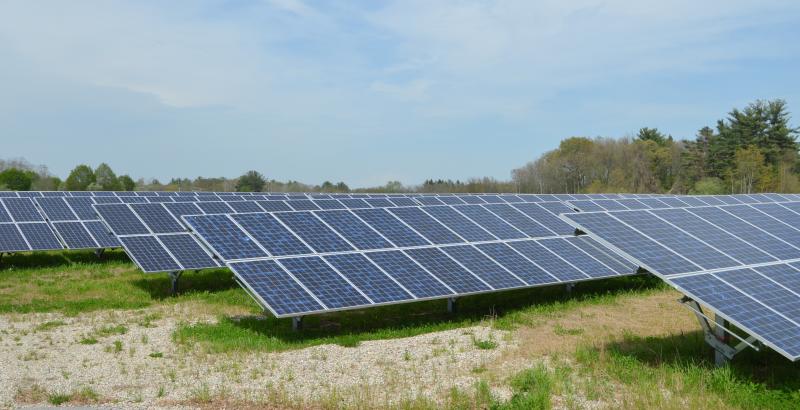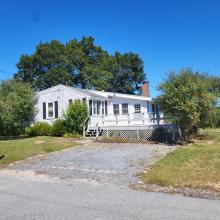Dartmouth’s solar initiative a shining example
When Town Administrator David Cressman arrived in Dartmouth six years ago, it was apparent that citizens were interested in clean energy and sustainability.
At the time, the town was exploring installing two wind turbines, an idea that became contested in the community.
“We went through a fairly extensive due diligence,” said Cressman. “We determined it was a better approach to go with solar. And that’s what happened.”
Today, Dartmouth leads the state in terms of solar capacity, producing of 28.1 megawatts across 250 projects. In 2014, Massachusetts was ranked the fourth highest solar producing state by the Solar Energy Industries Association.
Most of Dartmouth’s energy (23.1 megawatts) is produced at its seven solar farms, while the remainder originates from the other commercial and residential projects as well as from UMass Dartmouth.
Out of the seven farms, the town has 20-year town power purchase agreements with two of them — Borrego at the capped Russells Mills Road Landfill and Electric Management Inc. (EMI) at Energy Park. The two locations are projected to save the town more than 13 million over the 20-year period.
“We purchase the power from those two, and we get net metering credits for selling them to Eversource,” Cressman said. “Generally what happens is the net metering credits exceed the price we pay.”
The hope is that the revenue will float into the town’s general fund and be used for a variety of capital improvements.
“A lot of it is going to flow into the sewer and the water enterprise, because those are the highest that have electric needs,” said Cressmen.
The town also benefits through revenue from building permits and property tax from the solar farms.
SouthCoast Energy Challenge, a group that launched in Dartmouth four years ago with an aim to make homes more energy efficient, saw an exponential growth in interest during their 2013 campaign.
“Twenty-three installations went in as a result of a five-month initiative,” said Karen Stewart, director of SouthCoast Energy Challenge.
While their goals were higher for the initial push, Stewart said that with a project like solar installation, some homeowners can take up to a year to weigh their options before making the initial investment. In the months following the drive, more building permits were submitted.
She also thinks that the average customer is no longer focused entirely on the environmental impact of alternative energy. They’re now enticed by savings, too.
“People are viewing solar as a good financial investment because the return on the investment is relatively quick in Massachusetts,” said Stewart.
It’s not just residents who feel that way. The south-facing roof of the BayCoast Bank on 299 State Road is lined with solar panels.
James Rice, a spokesperson for the bank, said that the company has seen an increased investment in solar at their branches due to long-term cost savings.
“Right now, in Dartmouth, it generates 15,000 kilowatts annually,” said Rice, which he estimates absorbs about 15 percent of the cost of electricity.
Between federal tax credits received for the installation, and depending on how many panels can be installed at each branch, the average payback period for BayCoast has been about three years.
Stewart estimates residents can expect roughly an eight-year return on investment with solar in the state. Partly, that has to do with loans.
“The loan mechanisms are opening up. Whether it’s through your bank and your home equity or through the Clean Energy Center,” she said.
A new program, The Mass Solar Loan, will be launching soon and will become available this summer.
“You’re now paying on a loan to own as opposed to paying an electric bill,” said Stewart. “At the end of the loan period, you’re going to own your system, and your electricity’s going to be free.”
With the magnitude of projects cropping up in Dartmouth, the town has been recognized for its efforts.
In October of last year, the town of Dartmouth and UMass Dartmouth received the Leading By Example Award from the state for its commitment to clean energy. The town also won a Sustainability Award from the International City Management Association last September.
This has positioned the town into something of a new role: a case study for other towns looking to reduce their carbon footprint.
“I’ve had contacts from as far away as Michigan and Maryland looking for advice and guidance in terms of solar development,” said Cressman. “I think we’ve become a resource.”















